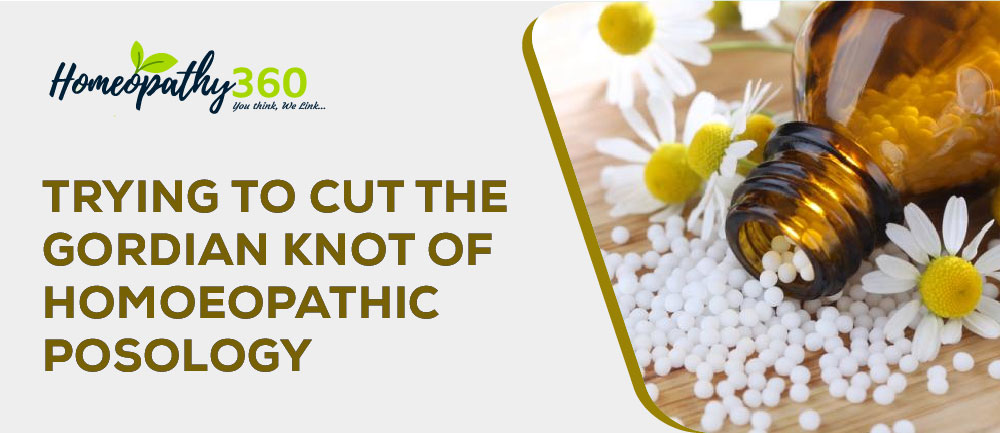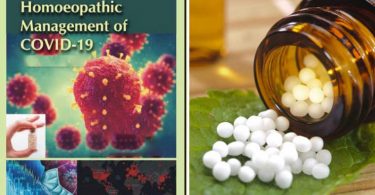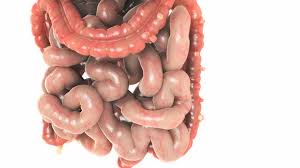
Abstract – Dr Dunham has stated, “in prescribing, the first essential is the correct choice of the remedy. The second point, in many cases, though not always, which is essential is the judicious choice of the potency.” This article throws light on the dilemma of potency and bring forth the words of wisdom regarding posology by the masters of homoeopathy.
Keywords – Posology, dose, potency, scale, tips.
Introduction
Homoeopathic posology is a subtle and somewhat complex dimension of the art and science of homoeopathy. It poses a great difficulty for practitioners, especially the beginners. Perhaps, it won’t be wrong to assert that, only over a period of time one can get a sound understanding of the same. In the meantime, one can surely take help of some guidelines provided by masters of homoeopathy.
An excerpt from aphorism 278 of the ‘Organon of Medicine’ by Dr Hahnemann says, “pure experiment, careful observation of the sensitiveness of each patient, and accurate experience can alone determine dose of each individual medicine……” (1)
Dr Stuart Close on posology(2)
It is not to be denied that the subject of the dose in homoeopathy is a very important one. The three essential elements of the system are the principle, the remedy and the dose; and all of them are of equal importance. Posology and potentisation used to be the subjects of misunderstandings, discussions and controversies in the early days of homoeopathy that the profession, after being divided into two opposing camps, grew tired of the subject. It came to be regarded as a kind of “gordian knot,” to be cut by each individual as best as he could with the instrument at his disposal. Hahnemann himself, at one time, was almost in despair of ever being able to bring his followers to an agreement on the subject, and asked everyone to cut the knot by proposing to treat all cases with the thirtieth potency. Following this suggestion, others adopted a dosage confined to one, or a very limited range of potencies. The materialistically minded restricted themselves to the crude tinctures and triturations, or the very low dilutions, ranging from 1x to 6x. Others ranged from the third to the thirtieth potencies, while another small class of metaphysical tendency used only the very high potencies, ranging from the two hundredth to the millionth, each according to his personal predilection.
Such a state of affairs is unfortunate. Assuming that there is a difference in the action of the various doses of medicines, and that a series of potencies or preparations of the different medicines has been available for use; it follows that the entire series should be open to every practitioner, and that each man should be competent, willing and ready to use any potency or preparation of the remedy indicated in a given case, without prejudice. If he confines himself to one or two potencies, whether low, medium, or high, he is limiting his own usefulness and depriving his patient of valuable means of relief and cure.
Following homoeopathic principles, any potency may be required in any case. It is as unreasonable to expect cure in all cases with two or three potencies or with two or three remedies. In either case, those who follow such a course are governed more by the love of ease and their prejudices than they are by their desire for efficiency.
The selection of the dose is as much an integral part of the process of making a homoeopathic prescription as the selection of the remedy, and often quite as important. A well selected remedy may fail utterly, or even injure, because of wrong dosage. Dose as well as remedy must be adjusted according to the patient’s need.
Compilation of tips on homoeopathic posology
1) Never leave a remedy until tested in a higher potency, if it has benefited the patient. (3)
2) When the remedy is correct, it will mostly work whatever the potency. For how long the remedy will work depends on the potency. (4)
3)If the physician has gone up to CM potencies and now the patient shows no desired response, he can commence with low potencies again, as the susceptibility to low potencies is again restored.
4) Diseases characterised by an erratic pattern should be approached with medium potencies in infrequent repetition schedule to avoid aggravations.
5) As suppressions yield a poor state of susceptibility, low to medium potencies in repetitive doses are to be preferred in patients who have sustained suppressions.
6) “In high temperatures, use the medium potency (200th) and repeat night and morning until reaction occurs” – Dr C M Boger (5)
7) Persons addicted to smoking, alcohol, etc. need low potency. (6)
8) “One should not use an extremely high potency on the aged or the infant, neither should he refuse to give a higher potency, if necessary, than the one administered, providing the selection of the remedy is correct. A higher potency nearly always does the trick. The beauty about this is that the higher potency antidotes the lower and goes on with its work, also a lower potency will antidote a higher.” (Dr Schwartz) (5)
9) One must realise that dealing with high potencies denotes dealing with razors. “I would rather be in a room with a dozen negroes slashing with razors than in the hands of an ignorant prescriber of high potencies. They are means of tremendous harm as well as of tremendous good”. (Dr Kent) (7)
10) Sports injuries: In a sports injury or other acute trauma to a basically healthy person, give 30 C, then four hours later, give 200 , and then four hours later, 1M.This method was used by the famous Swiss Homoeopath, Dr Pierre Schmidt, from Geneva with spectacular results. Dr Luc de Schepper also claimed to have used this method with much success.
11) Time of intake of medicines: a) In general, it is best to take the remedies at bedtime so that they can start working while the person is at rest. The next day, the patient can observe his reactions (aggravation/ amelioration/ no change) and communicate them to t. There are some exceptions to the rule, for example, Phosphorus, Ignatia amara, Bellis perennis, because if these are prescribed at night, the patient may be awake all night with a restless, hyperactive mind.
b) As a general rule, if possible, we shall administer the remedy away from the aggravation time.(for example Nat mur is given away from its aggravation time of 10 am .Remember that Phosphorus may have an aggravation of 36 hours after it is taken.)
c) The most appropriate and efficacious time for administering the medicine in cases of intermittent fever is immediately or soon after the termination of the paroxysm.
d) The menstrual cycle: It is better to wait at least 3 days after the beginning of the menstrual period before taking a chronic remedy for the first time. In addition, the patient should not start taking a new remedy less than one week before the menses, especially if there are menstrual symptoms in her complaints. Otherwise, menses can delay the action of the remedy or produce excessive aggravation. This is especially important with LM potencies, in which one carefully observes the reaction to the first dose to assess whether the potency is correct.
12) Magnesium phosphoricum sometimes acts best when given in hot water. (8)
13) When an immediate amelioration is followed by wrong aggravation and we have reason to think that it is an incurable case, and if the symptoms still point to the same remedy, a lower potency of the same remedy will palliate (and even antidote the unfavourable action of the high potency given earlier).
14) The potency in intermittents (R E S Hayes) (9)
Note: It may be a waste of time to use low or medium low potencies in most cases of intermittent fever. If the physician is sure of the remedy, and of course he should be reasonably sure, it is best to strike hard at the beginning and get results worth prescribing for. This applies to various other conditions. The potency should not be selected for the disease directly but for the patient according to the manner in which the vital force is being affected by the disease force.
15) When there is no change in the symptoms even after the administration of the best selected (indicated) remedy, it may be due to sluggish reaction of the patient. In such cases, one may give an initial dose of high potency to jog him up, followed by medium or low one to continue healthy reaction.
16) Advanced pathological changes contraindicate high potency. Also, high potency is contraindicated when one encounters skin diseases with hypersensitivity or allergic diathesis.
17) The best potencies for initial experiments in homoeopathy are the 12th and 30th. (10)
18) For hypersensitive patients, use low or medium potencies.
19) In case of long time suppressions, 50 millesimal potency works very effectively and can revive suppressed symptoms better than centesimal potency. (11)
20) “The ability to individualize the dose increases with the number of the various potencies which may be used.” – Sir Boenninghausen
21) It is entirely different to lead the case with 50 millesimal potency in comparison to centesimal (unique dose, prognostic observations, potencies, second prescription); as before using 50 millesimal scale, it is necessary to make a thorough and conscious comparative study of the sixth and fifth edition of the Organon of Medicine. (12)
Conclusion
“The selection of the right remedy for each individual case is not always an easy matter. It requires much diligent study both of the philosophy of homoeopathy and the demonstrated symptoms of each individual drug. Without this one is unable to make even a poor prescription, which is worse than none.” (Dr Schwartz) [13]
“I have found by experience that it is unwise to confine oneself to any particular potency, but to have all the potencies and use the one best suited to each individual case. (Dr Schwartz)” [13]
Dr Hahnemann’s directions, then, to use the minimum dose required to extinguish the disease is the best rule to go by. To determine the potency of the individual case involves the summing up of the various manifestations of energy of the forces within the organism including age, temperament, intensity, duration, rate of progress, location (within the organism, not the physical body alone) of the disorder. 7. Tissue change. 8. Personal or inherent vital energy and amount of work to be accomplished. The selection of the potency is the finishing touch of an artistic prescription.
References
1) Hahnemann S. Organon of Medicine. 6th edn, Decker, S (trans.) O’Reilly, WB (ed. and annotated), New Delhi: B Jain Publishers; 2010
2) Close S. The Genius of Homoeopathy. 1st ed. New Delhi: B Jain Publishers; 2002
3) Kent JT. New remedies, clinical cases, lesser writing, aphorisms and precepts.
4) Master F. The Bedside Organon of Medicine. 1998
5) The Homoeopathic recorder – 1931
6) Kulkarni A. Homoeopathic posology
7) Kent J T. Lectures on Homoeopathic Materia Medica. New Delhi: B Jain Publishers; 2004
8) Allen HC. Keynotes and characteristics with comparisons of some of the leading remedies of the Materia Medica, 4th Indian ed.: Kolkata: Roy Publishing House; 1977
9) International Hahnemannian Association. 1908
10) Tyler ML. Pointers to common remedies.
11) Schepper LD. Hahnemann revisited.
12) Villalva FF. LM scale – 50 millesimal potencies
13) The Homoeopathic recorder – 1923
About the author
Dr Satyajit Kuchar. M.D (Hom.) in Homoeopathic Materia Medica. Consultant Homoeopath; Nutrition, Diet planning and Weight loss.
Author of:
1) ‘Widening horizons in study of Homoeopathy: eye-opening and thought-provoking insights’
2) ‘Compendious study of Cinchona officials and notes on LM scale’





